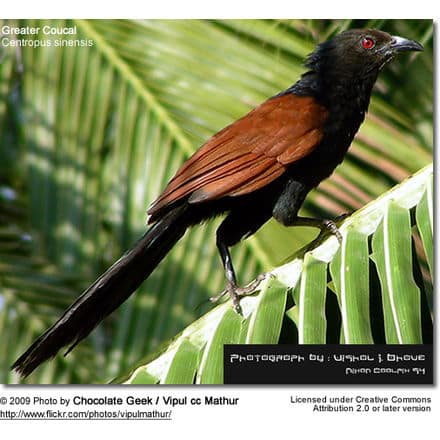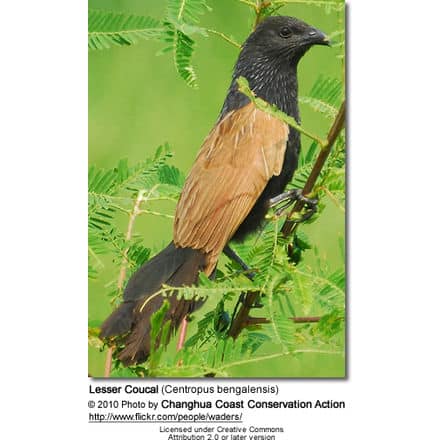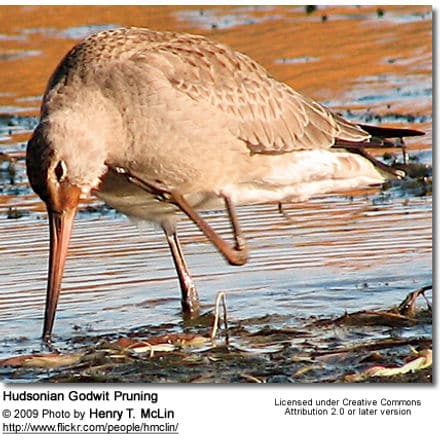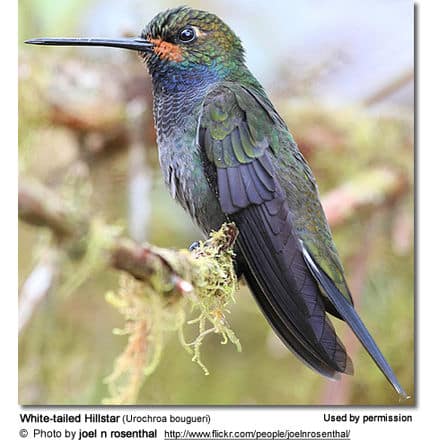Coucals – Centropodinae
A coucals is one of about 30 species of birds in the cuckoo family. All of them belong to the subfamily Centropodinae and the genus Centropus.
Unlike many Old World cuckoos, coucals are not brood parasites. On the other hand they do have their own reproductive peculiarity: all members of the genus are to varying degrees sex-role reversed so that the smaller male provides most of the parental care.
At least one coucal species, the Black Coucal, is polyandrous.
Some species (Centropus phasianinus) have the male investing more in incubation and parental care.
Recent DNA evidence suggests that they should be raised to family status, as Centropodidae.

Description
Many coucals have a long claw on their hind toe (hallux). The genus name from Greek kentron, a spike, and pous for foot describe this hallux claw. The feet have minute spurs and this is responsible for the German term for coucals Sporenkuckucke.
The common name is perhaps derived from the French coucou and alouette (for the long lark like a claw). (Cuvier, in Newton 1896) The length of the claw can be about 68-76% of the tarsus length in the African Black Coucal C. grillii and Lesser Coucal C. bengalensis.
Only the Short-toed Coucal C. rectunguis is an exception with the hallux claw of only 23% of the tarsus length. Thread-like feather structures (elongated sheaths of the growing feathers that are sometimes termed trichoptiles) are found on the head and neck of hatchlings and can be as long as 20mm.
Nestlings can look spiny.
Many are opportunistic predators, Centropus phasianus is known to attack birds caught in mist nets while White-browed Coucals Centropus superciliosus are attracted to smoke from grass fires where they forage for insects and small mammals escaping from the fire.
Coucals generally make nests inside dense vegetation and they usually have the top covered but some species have the top open. Pheasant Coucal Centropus phasianinus, Greater Coucal C. sinensis and Madagascar Coucal C. toulou sometimes build an open nest while some species always build open nests (the Bay Coucal C. celebensis)
Some coucal species have been seen to fly while carrying their young.
Species
- Bay Coucal, Centropus celebensis
- Rufous Coucal, Centropus unirufus
- Black-faced Coucal, Centropus melanops
- Sunda Coucal, Centropus nigrorufus
- Buff-headed Coucal, Centropus milo
- Goliath Coucal, Centropus goliath
- Violaceous Coucal, Centropus violaceus
- Ivory-billed Coucal or Greater Black Coucal, Centropus menbeki
- White-necked Coucal or Pied Coucal, Centropus ateralbus
- Pheasant Coucal, Centropus phasianinus
- Timor Pheasant Coucal, Centropus phasianinus mui – extinct? (late 20th century?)
- Kai Coucal, Centropus spilopterus
- Black-billed Coucal or Lesser Black Coucal, Centropus bernsteini
- Biak Coucal, Centropus chalybeus
- Short-toed Coucal, Centropus rectunguis
- Black-hooded Coucal, Centropus steerii
- Greater Coucal, Centropus sinensis
- Centropus parroti (?)
- Andaman Coucal or Brown Coucal, Centropus andamanensis
- Philippine Coucal, Centropus viridis
- Malagasy Coucal or Madagascar Coucal, Centropus toulou
- Assumption Island Coucal, Centropus toulou assumptionis – doubtfully distinct; extinct (c.1920s)
- Black Coucal, Centropus grillii
- Green-billed Coucal, Centropus chlororhynchos
- Lesser Coucal, Centropus bengalensis
- Black-throated Coucal, Centropus leucogaster
- Gabon Coucal, Centropus anselli
- Blue-headed Coucal, Centropus monachus
- Coppery-tailed Coucal, Centropus cupreicaudus
- Senegal Coucal, Centropus senegalensis
- White-browed Coucal, Centropus superciliosus
- Burchell’s Coucal, Centropus burchelli
- Centropus colossus (Extinct, known from the quaternary Green Waterhole Cave, Tantanoola, South Australia)
Coucal Photo Gallery
Click on any of the below photos to go to the respective Species Information page.





